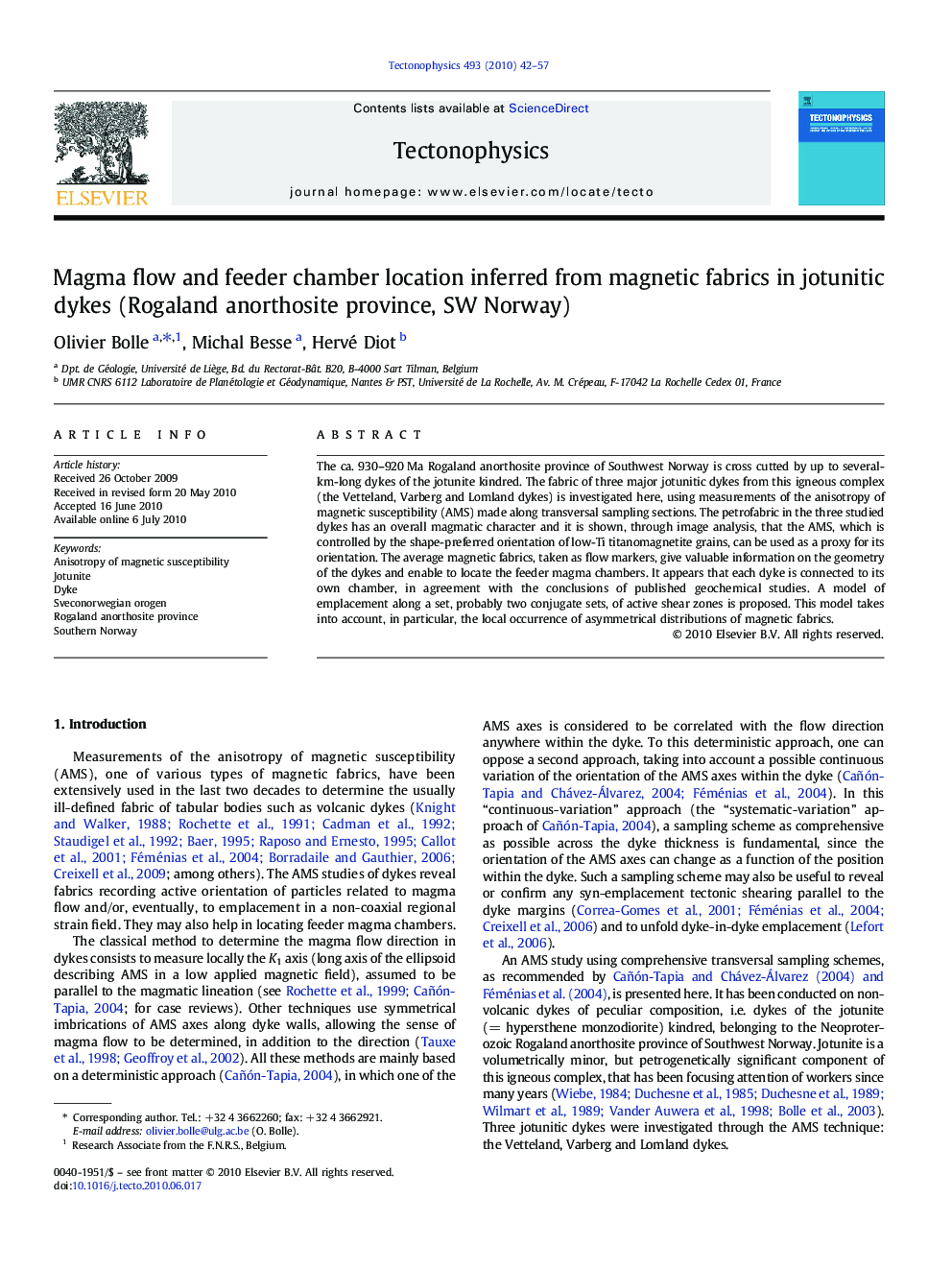| Article ID | Journal | Published Year | Pages | File Type |
|---|---|---|---|---|
| 4693416 | Tectonophysics | 2010 | 16 Pages |
The ca. 930–920 Ma Rogaland anorthosite province of Southwest Norway is cross cutted by up to several-km-long dykes of the jotunite kindred. The fabric of three major jotunitic dykes from this igneous complex (the Vetteland, Varberg and Lomland dykes) is investigated here, using measurements of the anisotropy of magnetic susceptibility (AMS) made along transversal sampling sections. The petrofabric in the three studied dykes has an overall magmatic character and it is shown, through image analysis, that the AMS, which is controlled by the shape-preferred orientation of low-Ti titanomagnetite grains, can be used as a proxy for its orientation. The average magnetic fabrics, taken as flow markers, give valuable information on the geometry of the dykes and enable to locate the feeder magma chambers. It appears that each dyke is connected to its own chamber, in agreement with the conclusions of published geochemical studies. A model of emplacement along a set, probably two conjugate sets, of active shear zones is proposed. This model takes into account, in particular, the local occurrence of asymmetrical distributions of magnetic fabrics.
Research Highlights►The fabric of the studied jotunitic dykes has an overall magmatic character. ►The dykes were fed from distinct magma chambers. ►The jotunitic magmas were probably emplaced along two conjugate sets of shear zones.
